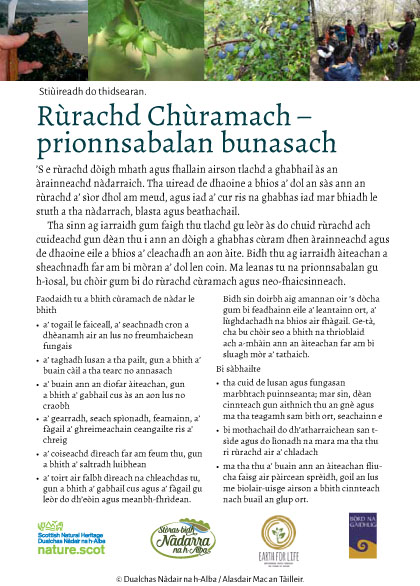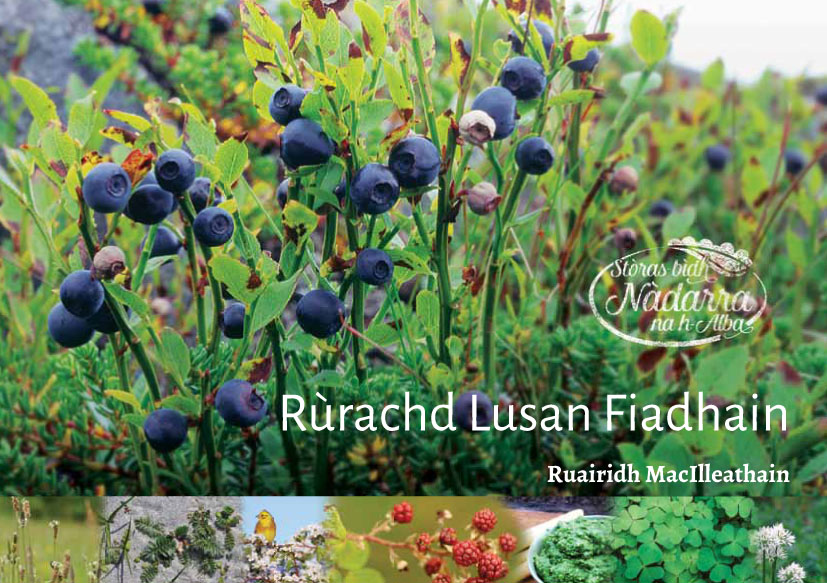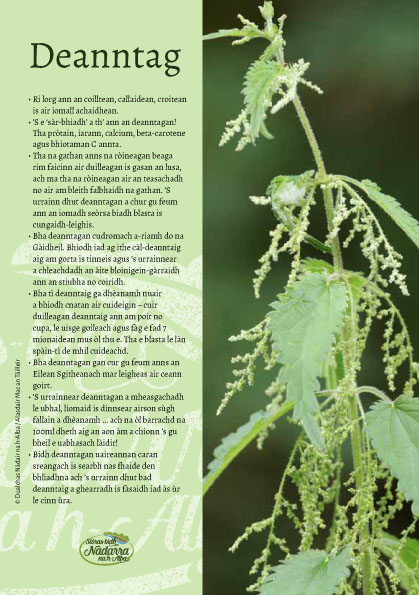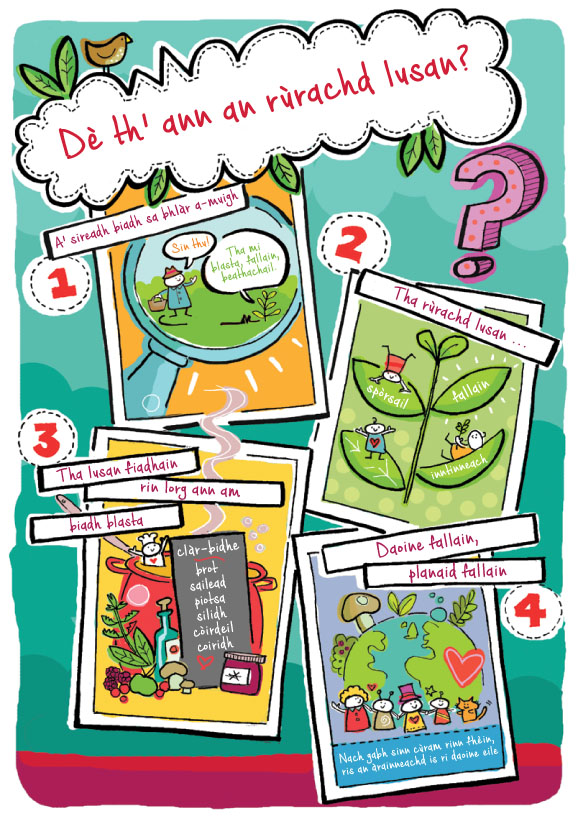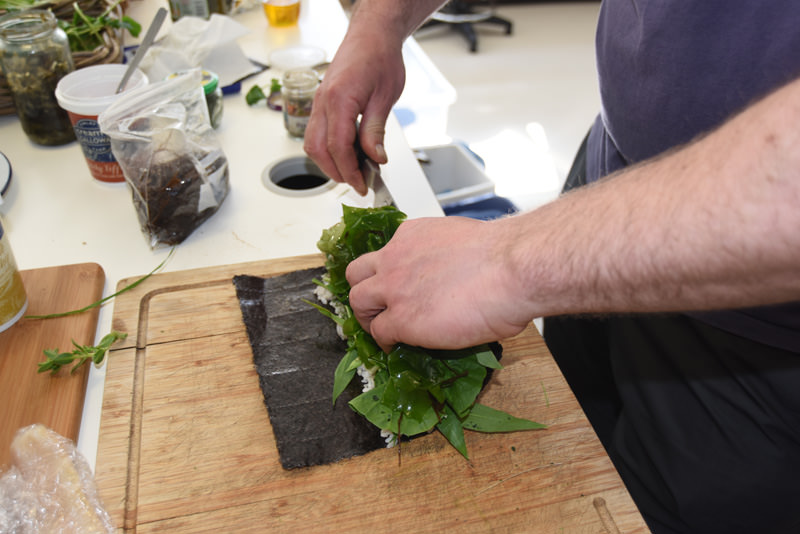
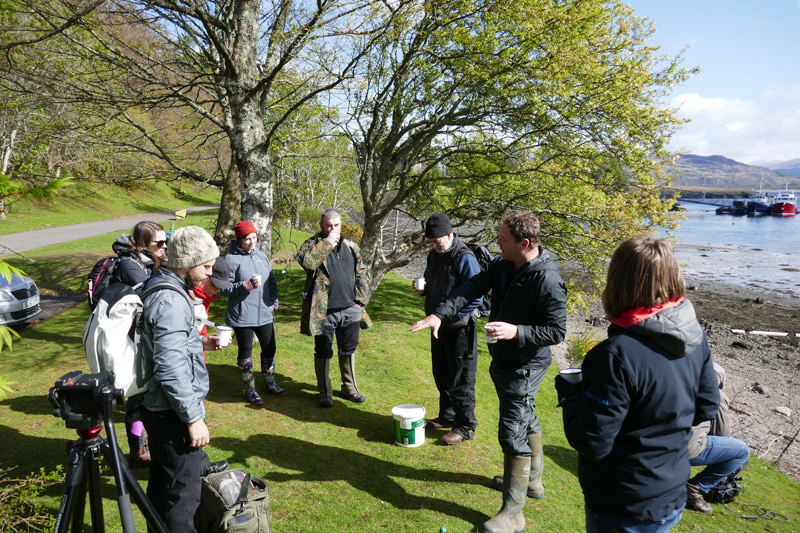
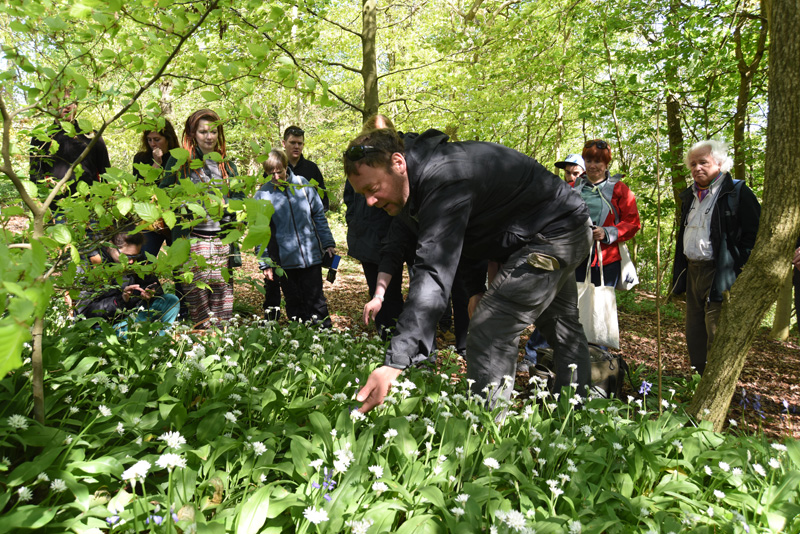
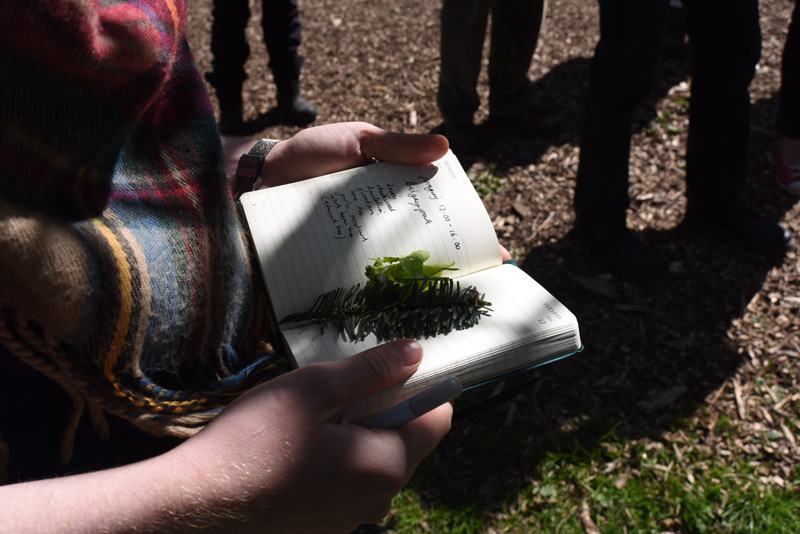
Gaelic Resources to download and use in the field, at home or in the classroom
We've created a number of handy guides for use in the classroom or in the field and you'll find them below:
You'll find further reading and more Gaelic resources on nature.scot
Rùrachd Chùramach – prionnsabalan bunasach
’S e rùrachd dòigh mhath agus fhallain airson tlachd a ghabhail às an àrainneachd nàdarraich. Tha uiread de dhaoine a bhios a’ dol an sàs ann an rùrachd a’ sìor dhol am meud, agus iad a’ cur ris na ghabhas iad mar bhiadh le stuth a tha nàdarrach, blasta agus beathachail.
Tha sinn ag iarraidh gum faigh thu tlachd gu leòr às do chuid rùrachd ach cuideachd gun dèan thu i ann an dòigh a ghabhas cùram dhen àrainneachd agus de dhaoine eile a bhios a’ cleachadh an aon àite.
Foraging for Wild Plants
Here are some of the plants and seaweeds that can be gathered and eaten in Scotland. You must be 100% certain of your plant identification in order to avoid any poisonous plants which look similar. Make sure that you gather plants in a way that is mindful, responsible and completely sustainable. There is guidance for responsible foraging at the end.
This publication was originally written in Gaelic and developed in partnership with Bòrd na Gàidhlig as part of the Gaelic Foraging Project in which the rich language and culture of the Gaels and close links with nature are explored.
Plant Identity Cards
Text here telling the reader what use they can make of these ID cards.
Gaelic nature resource for Schools
The cultural connections to nature through Gaelic are being promoted with new teaching materials from Scottish Natural Heritage (SNH).
Part-funded by Bòrd na Gàidhlig and produced in collaboration with social enterprise Earth For Life, the bespoke learning resource will help to connect young people with nature through sustainable foraging. The resource will equip Gaelic-medium teachers with the necessary skills, knowledge and vocabulary for wild plant identification and use.
Alasdair Taylor from Earth For Life has started using the education pack during recent foraging workshops at Gaelic-medium primary schools in Ullapool, Perth and Edinburgh. The resource builds on the success of Rùrachd Lusan Fiadhain, or Foraging For Wild Plants. Written by Roddy Maclean, that booklet is an invaluable Gaelic resource on responsible foraging. This new learning resource will create opportunities for young Gaelic speakers to learn and use the language to connect with nature.
Robyn Ireland, SNH’s Gaelic Officer, said, “We’re thrilled to launch this new learning resource and to be encouraging teachers to explore the close links that we have with nature. This resource builds on a range of other foraging resources that we have already developed in Gaelic, including a training course, guided walks and recipe cards.”
The project has been coordinated by a team from Scotland’s Natural Larder – an SNH-led partnership which aims to reconnect people with local, seasonal and wild food, and encourage sustainable use of natural food resources.
The project with Bòrd na Gàidhlig was jointly funded under the Gaelic Language Act Implementation Fund 2018-19 programme.

